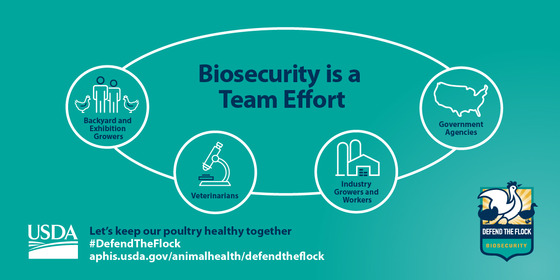|
 |
|
Division of Animal Health
|
|
|
 DATCP Asks Poultry Owners to Maintain Strong Biosecurity
The fall migration of wild birds is underway and will bring an increased risk of highly pathogenic avian influenza (HPAI) to domestic poultry flocks. There have been recent detections of HPAI in poultry in several states, including South Dakota, Minnesota and Iowa and others. During this time of increased HPAI risk, the Wisconsin Department of Agriculture, Trade and Consumer Protection (DATCP) recommends that poultry owners continue using the strongest biosecurity measures to protect their birds.

The best way to protect flocks from infection is through biosecurity practices that prevent virus introduction. All poultry owners — regardless of the size of the operation — must ensure that strict biosecurity practices are in place to prevent HPAI from infecting flocks. DATCP encourages all poultry producers to review and update their biosecurity plans. Those who do not have a biosecurity plan should work with their flock veterinarian to develop one that clearly addresses the risks for disease introduction specific to their operations. Biosecurity guides and other resources are available from the U.S. Department of Agriculture’s Defend the Flock Program.
|
State law requires Wisconsin poultry and other livestock owners to register where their animals are kept. DATCP uses this information to rapidly respond to animal disease outbreaks to protect animal health, the food supply, public safety, and Wisconsin’s agriculture economy. Registration is free and can be completed at wiid.org or by calling the Wisconsin Livestock Identification Consortium at (888) 808-1910.
Poultry owners who recognize any abnormal increase in mortality or clinical signs of disease, including respiratory distress, drop in food or water intake, decreased egg production, and lethargy are asked to report it to DATCP at (800) 572-8981.
Please visit hpai.wi.gov for regular updates on HPAI in Wisconsin and resources for poultry owners. More information on HPAI, prevention strategies and biosecurity is available here:
Wisconsin Department of Agriculture, Trade and Consumer Protection
Division of Animal Health
https://datcp.wi.gov
|
|
|
|